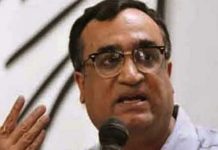
Political messaging apart, the fact remains that the Bill is an eyewash. Because while it seeks to provide a 33 per cent quota for women in Lok Sabha and state assemblies, its time line is dubious.
The suspense is finally over: the much talked about “vishesh satra” or special session of Parliament, started and ended putting to rest all speculation of what could or would be.
Of course, the list was long starting from whether the Government would officially tell the Parliament that India had been rechristened Bharat; whether it would field its members to gloat over the success of the G-20 summit; whether it would seek a consensus on the issue of One Nation One Election whereby the Centre and all the States will go for election for the Assemblies and the Lok Sabha at one go; or whether the Government would move a Bill on the Uniform Civil Code.
Since the Government had not put out an agenda, the Opposition questioned the need for a special session, given that the last session had ended only last month.
Whether it was under pressure or a voluntary move, the Government put out a “tentative list” a few days prior to the commencement of the session. However it did not let the cat out of the bag because even while it mentioned routine bills and a discussion on “Parliamentary journey of 75 years” it made no mention of the Women’s Reservation Bill.
The Congress dismissed the agenda as “much ado about nothing” on ground that legislative business could have waited till the winter session slated for November this year.
In fact Congress General Secretary Jairam Ramesh was bang on when he said “legislative grenades are being kept up their sleeves to be unleashed at the last moment as usual”.
Opposition apart, even the members of the BJP did not know what was in the offing. Given its track record, this is not surprising because the Government is known to keep things under wraps even from its ministers, leave alone its MPs.
Rewind to the year 2016, when the Union Cabinet found out about demonetization hours before Prime Minister Modi announced it to the nation; or the national lock down in 2020. Reportedly in response to the Right to Information queries about the Government department’s preparedness about the lockdown, the departments of health, finance, disaster management said that they did not know and hence did not prepare.
Ditto 2023: Except for a handful, the majority were unaware that the “legislative grenade” which Jairam Ramesh spoke about would be to provide 33% reservation to women in the Lok Sabha and state legislative assemblies.
True to its grain of springing surprises, the Women’s Reservation Bill was pushed a little before Prime Minister Narendra Modi’s speech in the lower House of the new Parliament building.
For the Government to use the special session route was in one sense a masterstroke. It was quite similar to the Opposition giving its alliance the acronym I.N.D.I.A. which has perhaps hit the BJP where it hurt most. If sources are anything to go by, the Modi government’s push to the name Bharat was primarily to counter the I.N.D.I.A. nomenclature.
But back to the special session, this was the second such session that was convened during Prime Minister Modi’s tenure. The first was in 2017: a midnight session to discuss the historic GST roll out.
But Modi is not the first Prime Minister under whom a special session has been convened. In 2008, a special session was convened to conduct a trust vote in 2008 when Manmohan Singh was the Prime Minister.
For the uninitiated, even though the Constitution does not specifically mention the term, “special session”, it does give the Government the power to convene one.
The Modi government decided to use these powers and go for the kill as it were with the twin objective of bidding farewell to the old Parliament building and creating History by resurrecting the long pending Women’s Reservation Bill.
Quite expectedly, the BJP rechristened it from its original Mahila Arakshan Bill to Nari Shakti Vandan Adhiniyam, literally meaning paying obeisance to women’s empowerment.
The bill was passed by both Houses of Parliament paving the way to reserve one-third of all seats for women in the Lok Sabha, the State Legislative Assemblies, and the National Capital Territory of Delhi. It had been hanging fire for nearly three decades.
However, neither the politics nor its underlying message was lost to the discerning.
For starters, the Bill was listed as the first order of business. This was perhaps to drive home the point that in Modi’s scheme of things, women top the agenda. If BJP sources are to be believed, the Modi government not only sees them as game-changers but a winning formula in the 2024 elections.
Add to this the move to introduce it in the new Parliament building which the Prime Minister called a “symbol of aspirations”. This twist is enough to make women feel that they are an important component in the BJP’s scheme of things. Remember the law declaring instant triple talaq illegal?
At another level, the date, September 19, is significant given that it coincided with Ganesh Chaturthi.
Religion being BJP’s USP, the Ganesh Chaturthi and the Bill linkage worked well particularly because the Bill is women centric.
However, the BJP is being slammed for bringing the Bill with an eye on the elections.
State and general elections are on the anvil and the Opposition is questioning the timing of bringing in the new legislation with the “why now” question staring hard. The Modi government has been in power at the Centre for nine years but did not move an inch to push the Women’s Bill.
The answer is simple: woo women electorate; project Modi as one who dares; flag the Party as pro-women and one committed to “women led development” and despite its fundamentalism showcase it as progressive.
Prime Minister Modi, too, seized the opportunity to showcase himself as the “chosen one”.
“God, he told Parliament, has given me the opportunity to take this forward,” he said referring to several failed attempts in the past to ensure a smooth passage of the Bill.
Equally, it is true that former Congress governments did try to pass the Bill during their tenures but the numbers were stacked heavily against them.
Political messaging apart, the fact remains that the Bill is an eyewash. Because while it seeks to provide a 33 per cent quota for women in Lok Sabha and state assemblies, its time line is dubious.
A new clause which has been inserted, among some others, says that the reservation will take effect after the delimitation exercise.
This caveat pushes it to 2029 because the delimitation exercise would follow after the Census.
As things stand, there is no clarity on when the Census will be completed given that it was due in 2021.
The government has already said that as per existing law, the next delimitation exercise may be conducted after the first census. Going by this, rough estimates put the Bill to take effect around 2029.
In fact it is this, more than anything else, that makes the move suspect. Because a push back by more than five years, makes this Bill as good as coming to a naught.
Therefore when Shiromani Akali Dal’s Harsimrat Badal spoke about “showing women ladoos which they cannot have” she hit the nail on the head. The Women’s Bill without a timeline is actually dangling a carrot to gullible women in the hope that it reaps electoral benefit in the Assembly elections this year and the general elections next year.













